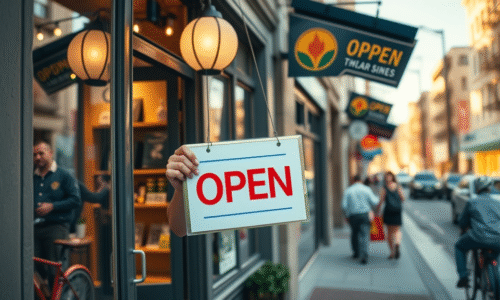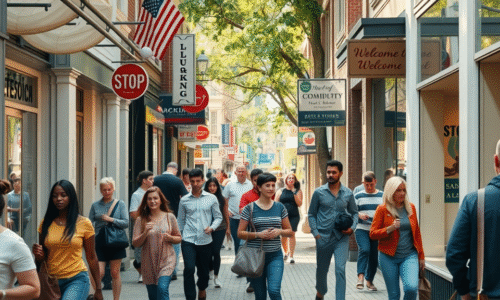Boost Sales Fast with Targeted Local Ads Tactics

Did you know that 78% of mobile searches for local businesses result in an offline purchase ? In today’s competitive local market, standing out isn’t just about having a prime location or great products—it’s about reaching your local audience at the exact moment they’re ready to buy. Targeted local ads have become a powerful tool to capture these ready-to-act local customers, driving measurable increases in foot traffic, sales, and brand awareness. If you’re looking to grow your business rapidly and stay ahead of the competition, this guide will show you exactly how to leverage local ad strategies for maximum impact.
Why Targeted Local Ads Are Essential for Local Businesses: Surprising Statistics & the Local Market Advantage
The explosion of smartphone use has changed the way consumers interact with local businesses forever. According to recent studies, over three-quarters of mobile users searching for local businesses act within 24 hours, whether it’s a store visit or a purchase. This means targeted local ads aren’t just another marketing expense—they’re a direct bridge to ready-to-buy local audience members who value convenience and immediacy.
For any local business , the local market advantage is about more than proximity. When you focus your advertising campaigns on particular geographic locations , your ad spend becomes more efficient, driving higher conversion rates and foot traffic than non-targeted efforts. This isn’t just theory—businesses that implement hyperlocal ad strategies often report double-digit growth in store visits and customer acquisition. Whether you’re running a restaurant, a service area provider, or a boutique, tapping into the buying behavior of your local customers unlocks outsized returns.
In today’s market, 78% of mobile searches for local businesses result in an offline purchase. Discover how targeted local ads can help you rapidly capture this ready-to-buy local audience.

- In today’s market, 78% of mobile searches for local businesses result in an offline purchase. Discover how targeted local ads can help you rapidly capture this ready-to-buy local audience.
What You’ll Gain from This Guide on Targeted Local Ads
- How to effectively reach your local audience with targeted local ads
- Proven local ad formats and platforms for local market success
- Tips to maximize foot traffic and drive conversion rates
- Actionable local advertising strategies for any specific geographic area
By the end of this article, you’ll know how to identify your ideal local audience, choose the best ad formats and media platforms, and transform interested neighbors into loyal customers. Get ready for practical, step-by-step tactics you can put into action immediately!
Understanding Targeted Local Ads in the Modern Local Market
Targeted local ads are digital advertising campaigns designed to reach a specific geographic area, such as a city, neighborhood, or tightly defined radius around your business. What makes local ads so effective is their ability to appear only to those users most likely to convert—potential customers who are near your store, attending local events, or seeking services in your immediate vicinity. Unlike broader targeted ads that cast a wide net, local ad campaigns focus your message on those who are geographically positioned to take action.
The key distinction is in the level of precision. While targeted ads might segment users by demographics or interests anywhere globally, local ads leverage exact location targeting to increase relevance and timeliness. For example, a pizza shop promoting dinner specials through mobile ads targeted to users within a two-mile radius during evening hours is using exactly this principle. Geographic location isn’t just a filter in these campaigns—it’s the driving force that turns awareness into immediate foot traffic or store visits.
Local ads connect businesses with nearby customers at exactly the right time — when intent is at its highest.
By prioritizing proximity, local businesses stand out during those crucial moments when a potential customer has the need, intent, and the ability to act fast.
- Defining targeted local ads and their growing relevance
- Differentiating between local ads and broader targeted ads
- Role of specific geographic location in local ad campaigns
Key Components of Successful Targeted Local Ads for Local Businesses
The most impactful targeted local ads are built from three core components: precise geographic location targeting, compelling local ad formats, and strategic use of popular media platforms. Each element contributes to making your advertising campaigns relevant and actionable for the local audience. Start by mapping your service area or the neighborhoods most likely to deliver high conversion rates —this is about identifying your best geographic opportunity, not just blasting ads citywide.
Next, focus on crafting ad formats that catch attention and drive clicks or store visits. Use vibrant visuals of your business, special offers, or even local event tie-ins. Whether it’s display ads on Google, carousel ads on Facebook and Instagram , or promoted stories on social media, the format you choose should fit the habits and preferences of your immediate community. Finally, leveraging the right media platforms becomes your force multiplier. Google’s local map packs, Facebook and Instagram’s geographic targeting, and even niche digital marketing networks can all deliver affordable, high-intent leads to your storefront or online calendar.
- Geographic location targeting and identifying your best local audience
- Crafting compelling ad formats for enhanced conversion rates
- Leveraging media platforms: Facebook and Instagram, Google, and beyond
Choosing the Best Local Ad Formats & Media Platforms for Your Local Audience
Overview: Most Effective Local Ad Formats for the Local Market
Selecting the right ad format can make a huge difference in the effectiveness of your local ad campaign. Options vary from classic display ads positioned on local news sites to mobile-focused social media ads on Facebook and Instagram that leverage location-based triggers. For higher engagement, consider interactive ad formats such as click-to-call, “swipe up for directions,” or even AR experiences that showcase local offers to people walking past your store.
Display ads work well for brand awareness within a specific geographic area, while search ads excel when a potential customer is actively seeking your services. Social media ads targeting local market segments drive interest through engaging visuals and shareable offers—perfect for spreading buzz about an event, product, or grand opening. The key is to match your format not just with your brand’s personality, but the behaviors and needs of your unique local audience.
- Display ads, social media ads, and search ads for specific geographic areas
- Interactive ad format options for high local engagement
| Ad Format | Engagement Level | Average Cost | Targeting Precision |
|---|---|---|---|
| Social Media Ads | High | $$ | Excellent (radius, interests, behaviors) |
| Google Search Ads | Medium-High | $$$ | Good (keywords, geo & search intent) |
| Display Ads | Medium | $ | Moderate (sites, location, demo) |
| Interactive/AR Ads | Very High | $$$$ | Best (location, engagement data) |

Top Media Platforms to Deploy Targeted Local Ads
Choosing the right media platforms is as impactful as selecting your ad format . Facebook and Instagram stand at the forefront, offering exceptional reach within your geographic area and powerful audience targeting by interest, age, habits, or proximity to business locations. Their maps feature and local business targeting options are ideal for both large and small enterprises aiming to reach a hyperlocal audience.
Google Ads is another powerhouse, making it easy to appear in search results and local map packs when nearby potential customers are actively looking for your services. Specialized local ad platforms—like Yelp for restaurants or Nextdoor for neighborhood events—provide valuable channels for niche local businesses that want to reach particular communities or service areas. Don’t overlook integrating multiple platforms for complete coverage, allowing you to capture audiences wherever they spend their digital time.
- Facebook and Instagram: Audience reach in your geographic area
- Google Ads: Search intent and local map packs
- Specialized platforms for niche local businesses
How to Define and Understand Your Local Audience for Targeted Local Ads
Before launching a targeted local ad campaign , take time to research and segment your local audience by key defining traits. Analyze demographic and behavioral data using tools like Google Analytics, Facebook Insights, and local census information to pinpoint who lives, works, or socializes in your key geographic areas . Layer in behavioral insights around purchase intent, browsing habits, and engagement with previous ads to further sharpen your focus.
Building rich local audience personas —complete with age group, interests, common challenges, and typical buying triggers—lets you predict not just who to target, but how to connect. Segment your geographic areas by purchase intent: for example, reach college students around noon with lunch deals, or local families on weekends with events.
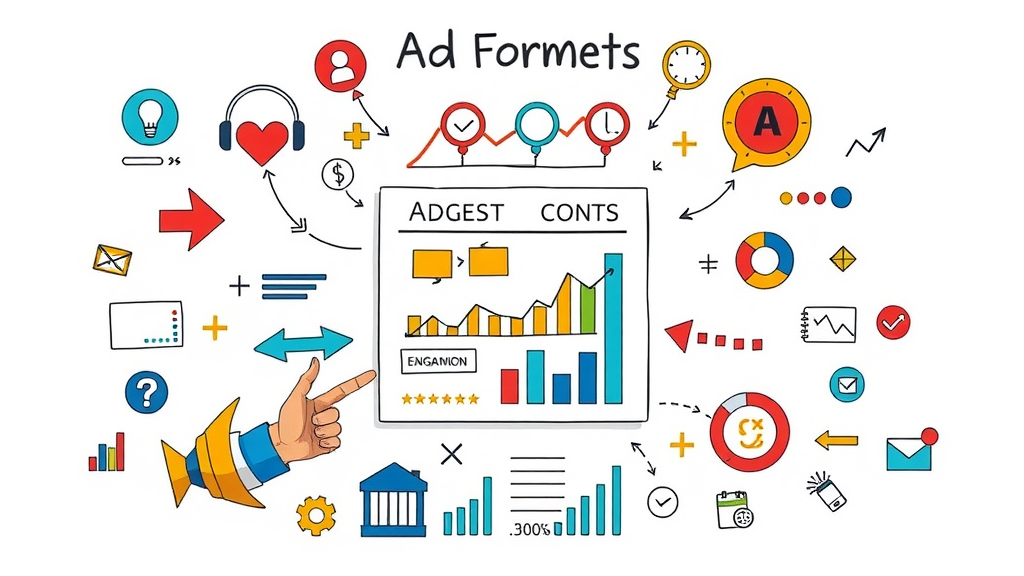
- Analyzing demographic and behavioral data in specific geographic areas
- Building local audience personas for higher ad relevance
- Segmenting geographic areas by purchase intent and interests
Creating Attention-Grabbing Content for Targeted Local Ads
The difference between an ignored ad and a conversion can come down to local relevance. Tailor your messaging to speak directly to your neighborhood’s passions and concerns. Highlight proximity, incorporate references to local events or landmarks, and use visuals or language that feels familiar to your immediate audience. Personalizing offers—like a “show this ad for 10% off at our Main Street shop”—can drive hyperlocal results, especially when paired with limited-time deals to encourage quick action.
For best results, ensure your visuals represent real local experiences—photos of your location, customers, or staff are much more relatable than stock imagery. Be concise and action-oriented in your copy, focusing on benefits and reasons to choose your business over others in the same local market . Dynamic creative—such as short video, GIFs, or eye-catching animations—stand out on social feeds and invite users to engage on the spot.

- Messaging strategies tailored to the local market
- Visual and copy tips for better conversion rates
- Personalizing offers for hyperlocal foot traffic
Optimizing Targeted Local Ads for Higher Conversion Rates
Continual optimization is key to making sure your targeted local ads hit their full potential. Start with A/B testing —run multiple versions of your creative, tweak your headlines, imagery, and calls-to-action, and monitor which combinations drive the most clicks, calls, or store visits. Integrate location tracking tools, POS data, and “offer claimed” analytics to measure both digital and offline conversion rates , ensuring every element of your campaign is contributing to your goals.
Don’t forget to calibrate your ad spend and targeting based on real-world performance. If you see high engagement in specific geographic areas or demographics, shift your budget accordingly for maximum return on investment. Adjust your audience targeting to weed out groups that repeatedly do not convert, and experiment with scheduling ads to match real-life foot traffic peaks, such as rush hour or during popular local events.
- A/B testing local ad creatives
- Tracking foot traffic and online conversions linked to local ads
- Adjusting ad spend and targeting for best ROI
Real-World Local Business Success Stories Using Targeted Local Ads
Evidence speaks louder than theory. Consider a local restaurant that tripled its weeknight foot traffic by promoting exclusive “locals-only” specials through Facebook ads, reaching diners within a one-mile radius. By tracking coupon redemptions and Google insights, the restaurant pinpointed which ad format led to the most in-store visits, continually refining their tactics for even stronger results.
A retail clothing store used Google’s local ad services to boost conversion rates by offering time-limited “shop and save” deals, surfacing the message only to nearby mobile users during busy shopping hours. For service providers, like plumbers or tutors expanding into a new community, well-placed local ads built instant brand presence, bringing in word-of-mouth referrals thanks to neighborhood reviews and customer stories.

- Case Study: Increasing foot traffic for a local restaurant
- Retail example: Boosting conversion rates with location-based offers
- Service provider: Building brand presence in a new local market
The Role of Google Ads vs. Local Ads: Choosing the Right Strategy for Your Business
| Criteria | Google Ads | Local Ads |
|---|---|---|
| Audience Reach | Global, national, or local by keywords | Hyperlocal, defined by radius, city, or ZIP |
| Best Use Case | Search intent, broad awareness | Immediate foot traffic, local engagement |
| Ad Format Options | Text, display, video, search | Display, social, interactive, AR |
| Conversion Measurability | Clicks, online sales/leads | Store visits, offline conversions |
| Integration | Fits with broad digital marketing | Complements Google, unique local tactics |
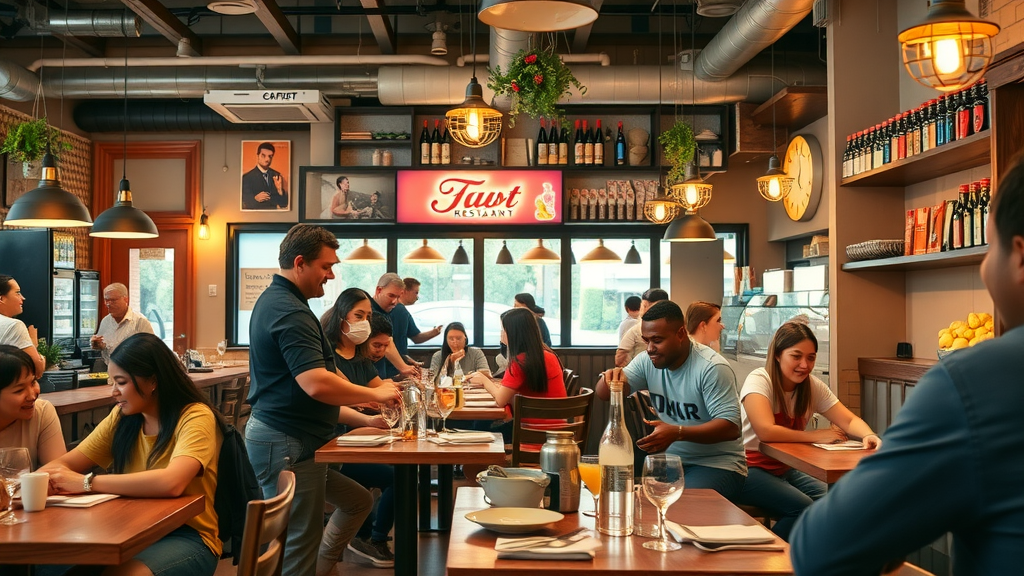
- When to use Google ads for local audience targeting
- Integrating local ads with your broader digital marketing strategy
Checklist: Setting Up Your First Targeted Local Ads Campaign
- Define your geographic location and target audience
- Choose the right ad format and platform
- Create compelling ad content
- Monitor key metrics (foot traffic, conversion rates)
- Continuously optimize for ROI
Following this checklist ensures your local ad campaigns not only launch successfully, but stay on track for regular improvement and maximum return on investment .
Common Challenges & Solutions for Targeted Local Ads in Specific Geographic Areas
Even the best campaigns can hit roadblocks. Local ad fatigue can set in if users see the same ads too often—solved by rotating creatives and adding fresh offers tied to local events . Policy restrictions on geographic targeting—such as for certain regulated industries—require careful attention to platform ad guidelines and sometimes demand more granular audience settings.
The pace of local audience behavior changes quickly. Keep an eye on performance metrics and pivot your strategy quickly to respond to shifting trends, whether due to a new competitor, seasonality, or changes in the community’s routines. Stay proactive with A/B testing and continuous refinement for ongoing success.
- Overcoming local ad fatigue
- Navigating ad policies for geographic targeting
- Adapting to fast-changing audience behaviors
Expert Insights: Quotes from Local Marketing Leaders on Targeted Local Ads
“Targeted local ads aren’t just about reach—they’re about relevance for every local business.”
“Harnessing behavioral data by geographic area drives higher conversion rates and foot traffic.”
Innovative Tools for Managing and Optimizing Targeted Local Ads
Advanced technology is making it easier than ever to manage and optimize targeted local ads . AI-powered targeting tools automatically analyze which demographics and geographic areas are driving the best results, while analytics platforms track both digital engagement and in-person outcomes like store visits or redeemed offers.
Automation solutions now handle multichannel campaigns—delivering synchronized ads across social media, search, and display platforms, maximizing your ad spend efficiency. When combined, these tools reduce manual work, eliminate guesswork, and make it simple for businesses of any size to run successful local ad campaigns.
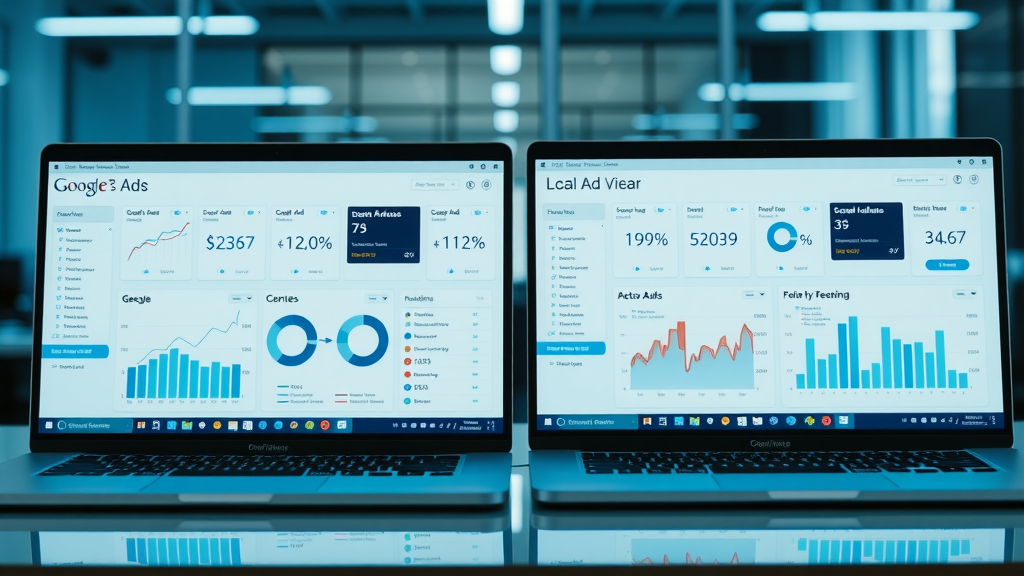
- AI-powered targeting tools for local ads
- Analytics platforms for tracking local audience engagement
- Automation for multichannel campaigns
People Also Ask: Targeted Local Ads Explained
What is an example of a targeted ad?
- A pizza shop runs Facebook ads that only appear to users within 2 miles of their address during prime dinner hours, boosting foot traffic from the immediate local audience.
What is local targeting?
- Local targeting focuses ad delivery to users based on specific geographic area details, such as ZIP codes, cities, or even radius around a store, ensuring local ads reach the most relevant audience.
What is an example of local advertising?
- A hair salon uses Google Ads to show special promotions to users searching for haircut services within its city, drawing in locals searching for immediate services.
What is the difference between Google ads and local ads?
- Google ads can target broad and local audiences using search behaviors and keywords, while local ads typically use more precise geographic targeting and are optimized for local foot traffic and conversions.
Essential FAQs on Targeted Local Ads for Local Businesses
- What budget should I allocate for targeted local ads? This depends on your local market size and business goals, but many local businesses start with $10-$50/day per platform, then adjust based on real results and ROI.
- How do I choose the right local ad formats? Match your format to your goals: use search or map ads for immediate intent, display/social media ads for branding, and interactive formats for engagement and offer redemption.
- Are Facebook and Instagram the best platforms for every geographic area? While they offer wide reach, it’s smart to test alternative platforms (like Google Maps, Yelp, and regional sites) to see where your actual local audience spends their time.
- Can I track offline sales and foot traffic from local ads? Yes—use promo codes, “show this ad” offers, or integrate with platforms that support offline analytics to measure your in-store results.
Actionable Takeaways for Local Businesses Using Targeted Local Ads
- Prioritize localized ad formats and platforms
- Use data-driven geographic targeting for improved conversion rates
- Stand out in your local market by testing creative strategies
Ready to Supercharge Sales with Targeted Local Ads?
- Want help applying these strategies to your business? Book your free strategy call now , and get clear, practical steps to grow your local reach fast.
Conclusion: Take immediate action by launching your first targeted local ad campaign, monitor performance closely, and optimize for what works best in your unique geographic area for rapid, measurable growth.
To enhance your understanding of targeted local advertising, consider exploring the following resources:
-
“15 of the Best Low-Cost Ways to Promote Your Business Locally” : This article offers practical strategies for local audience targeting, including location-based targeting and demographic segmentation, to effectively reach your community. ( business.nextdoor.com )
-
“Top 10 Local Business Advertising Strategies for Success” : This guide provides insights into optimizing your Google Business Profile and leveraging social media advertising to enhance local visibility and engagement. ( broadly.com )
These resources offer actionable strategies to refine your local advertising efforts and drive meaningful engagement within your community.


